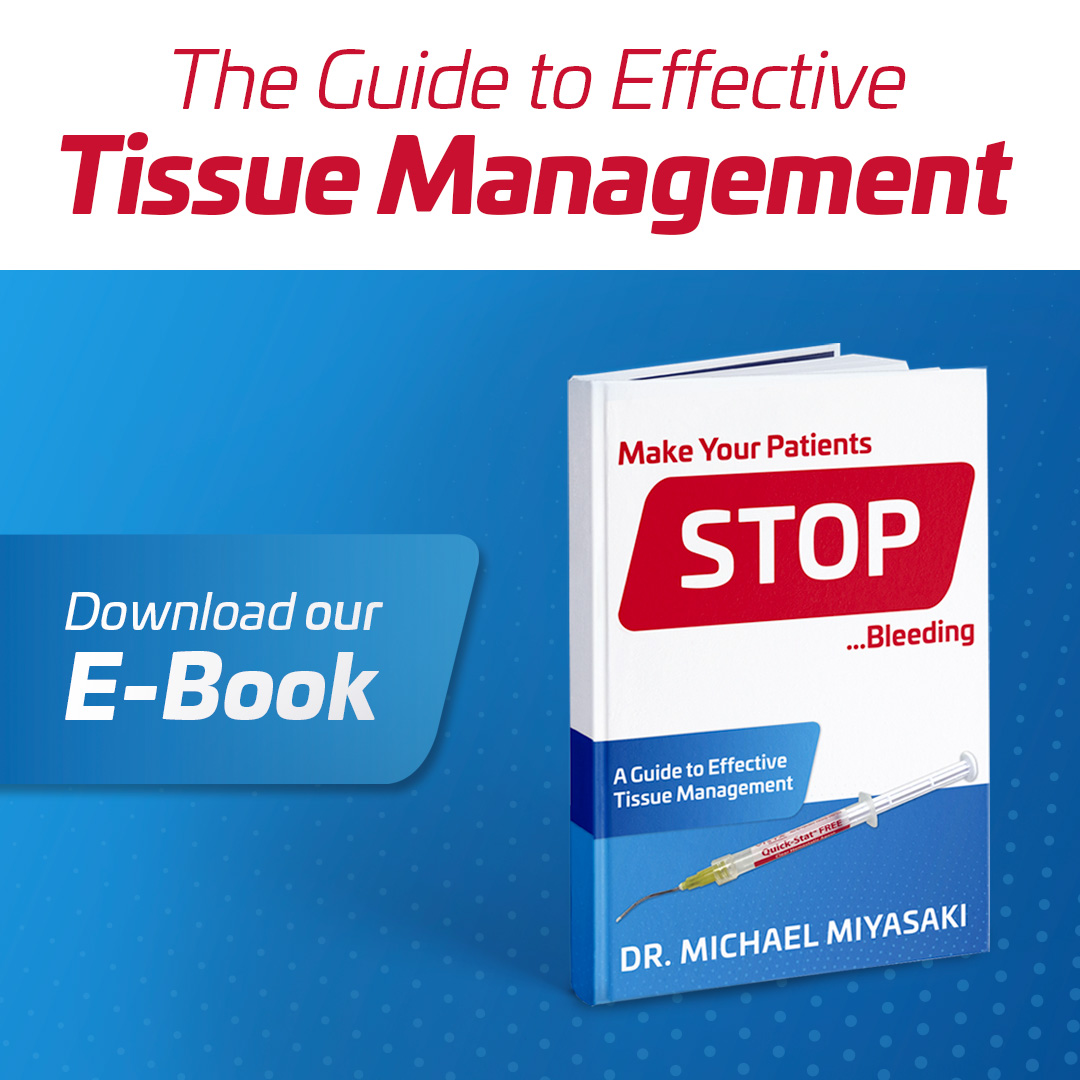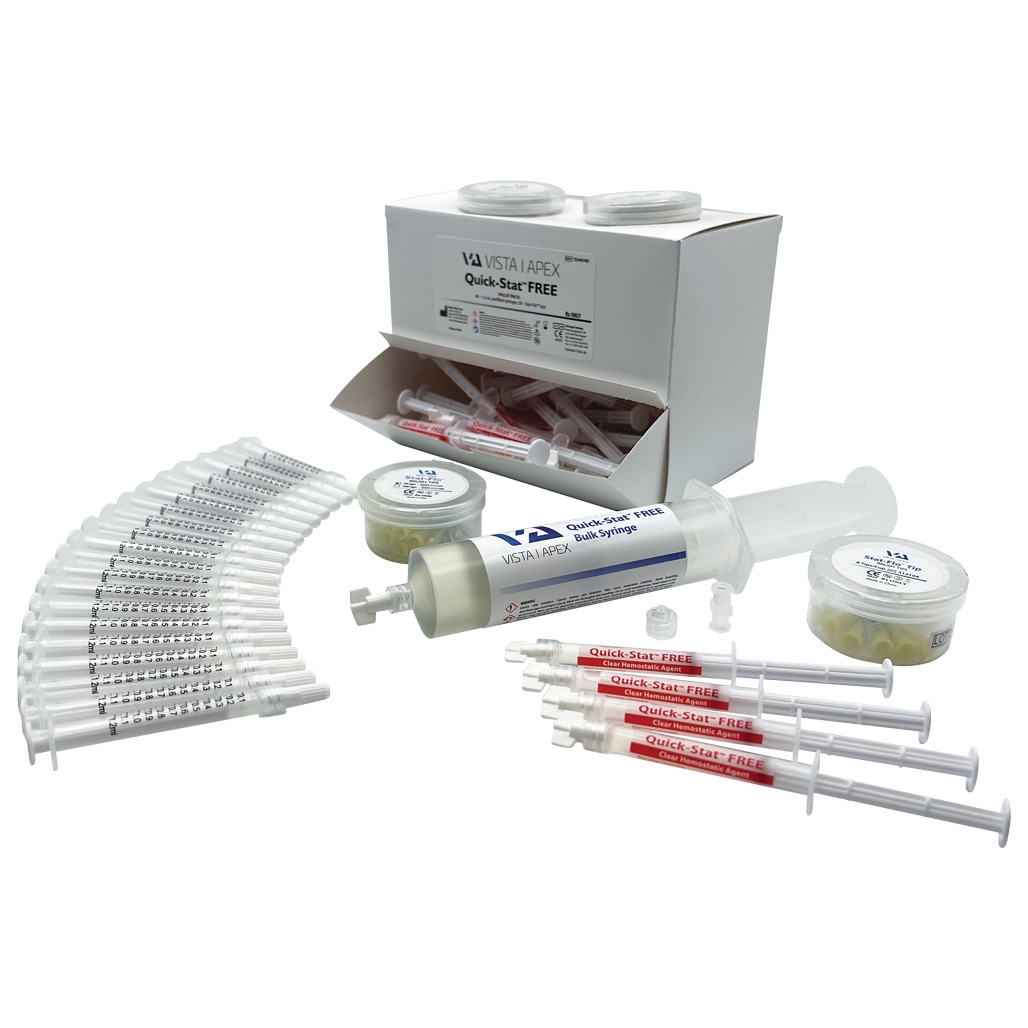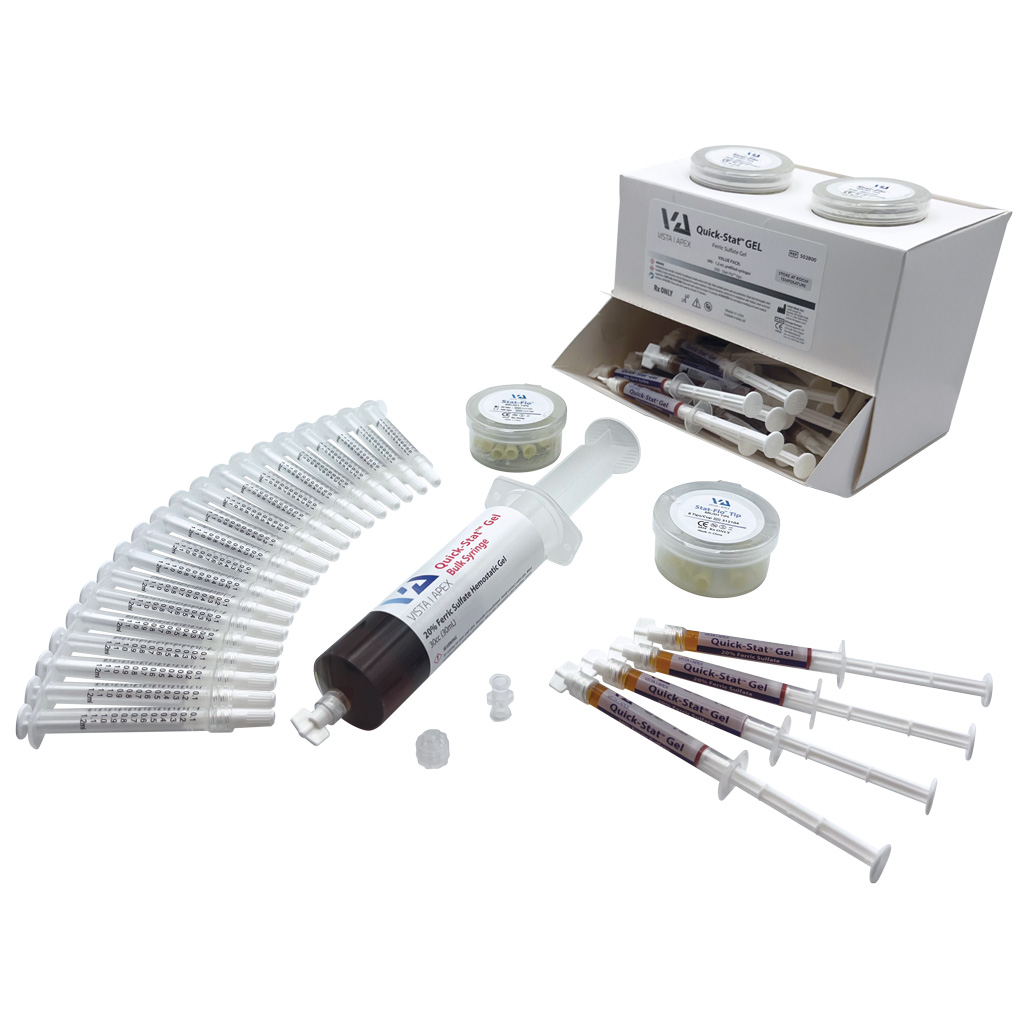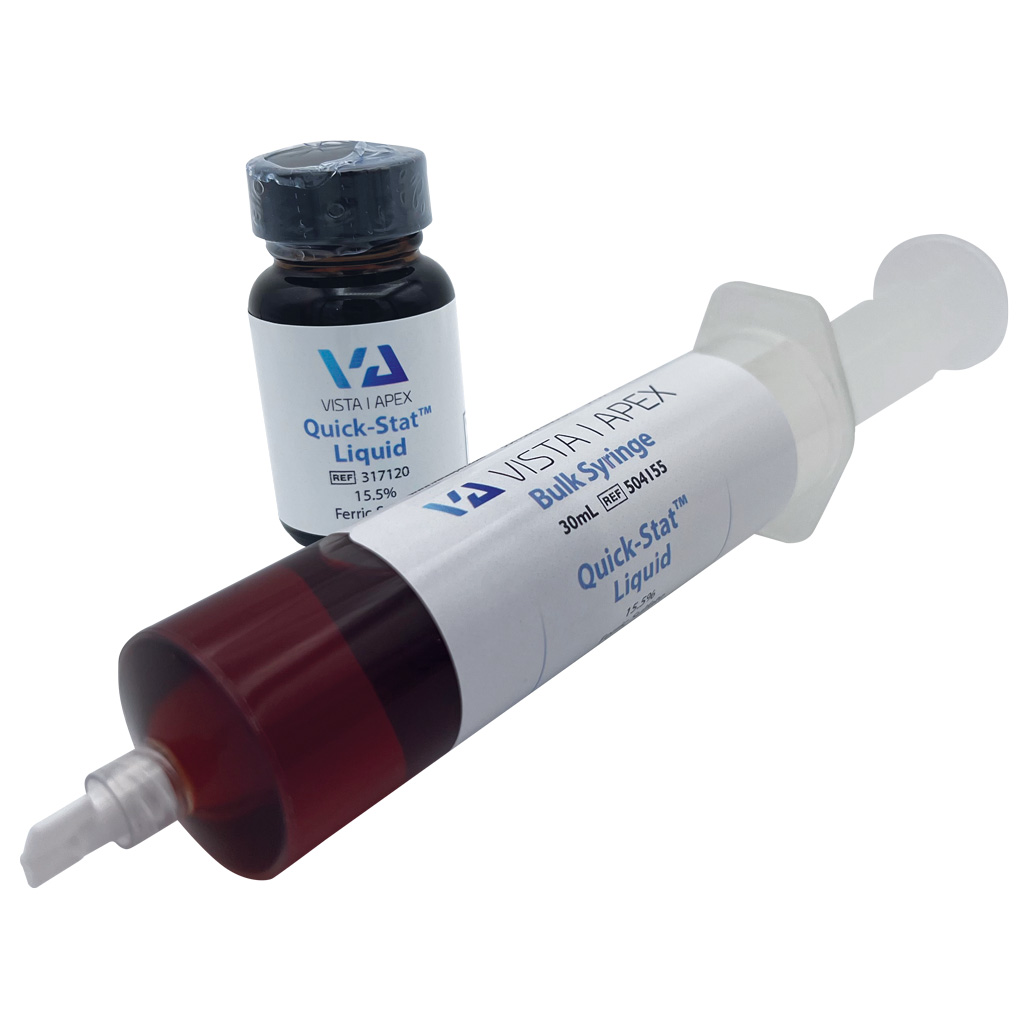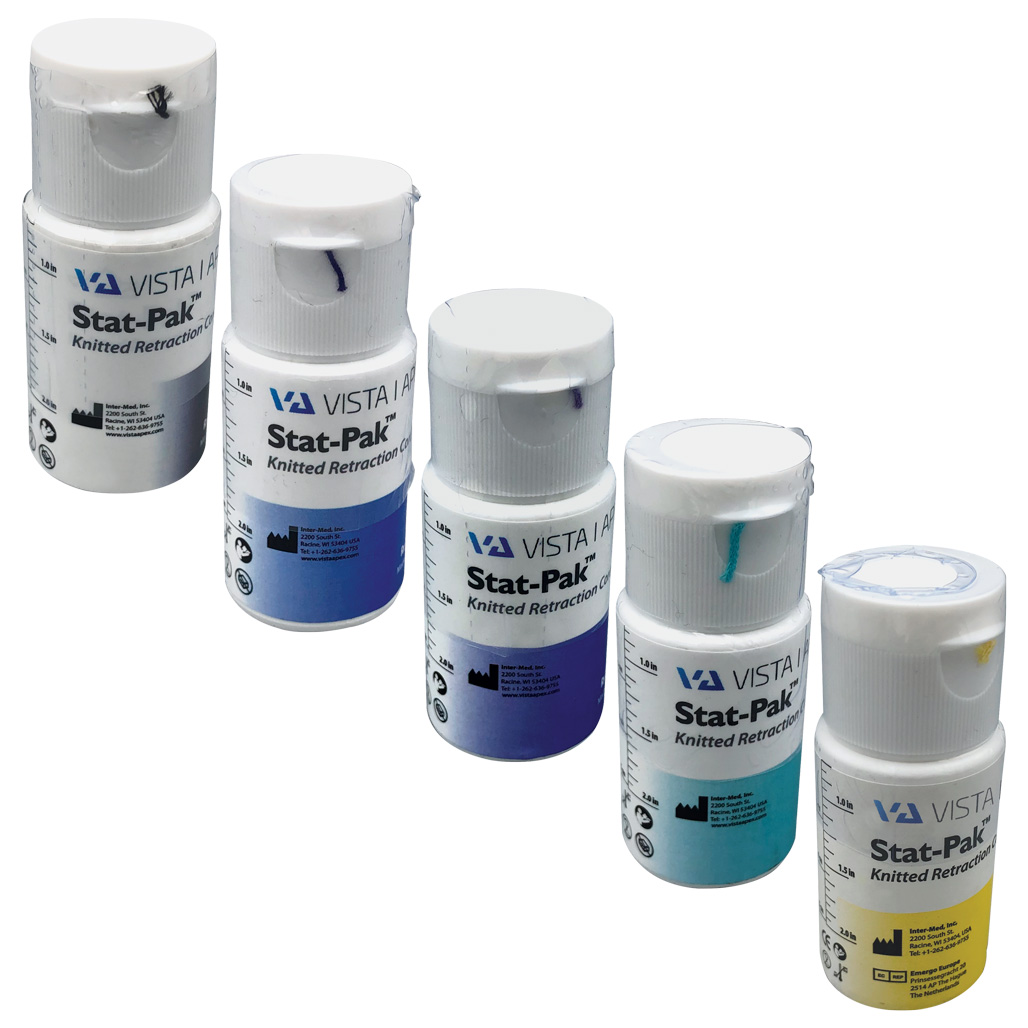Vista Apex has a solution for every type of bleeder.

Fill out the form below to receive your copy of our Guide to Effective Tissue Management:
Tissue Management eBook
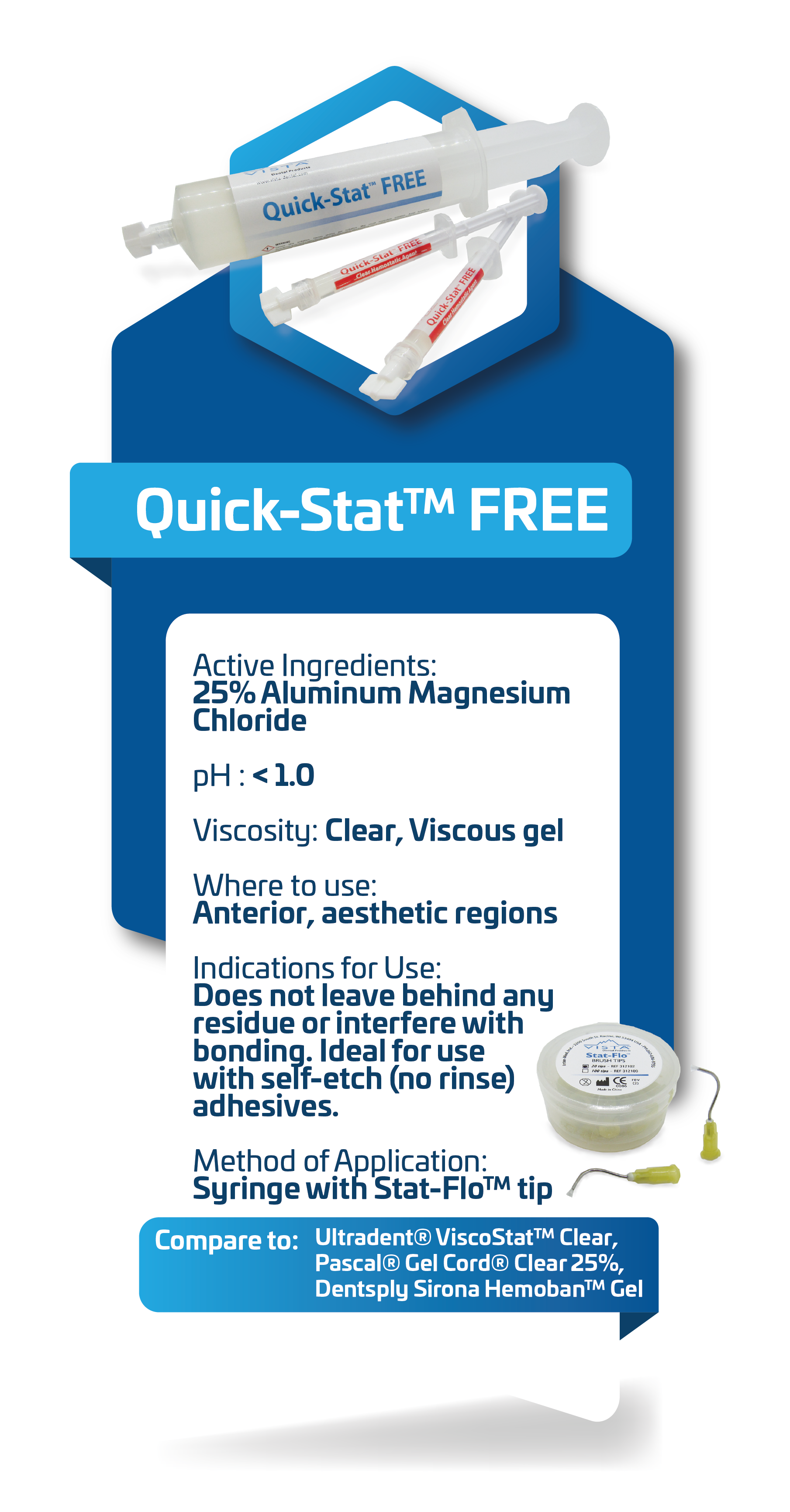
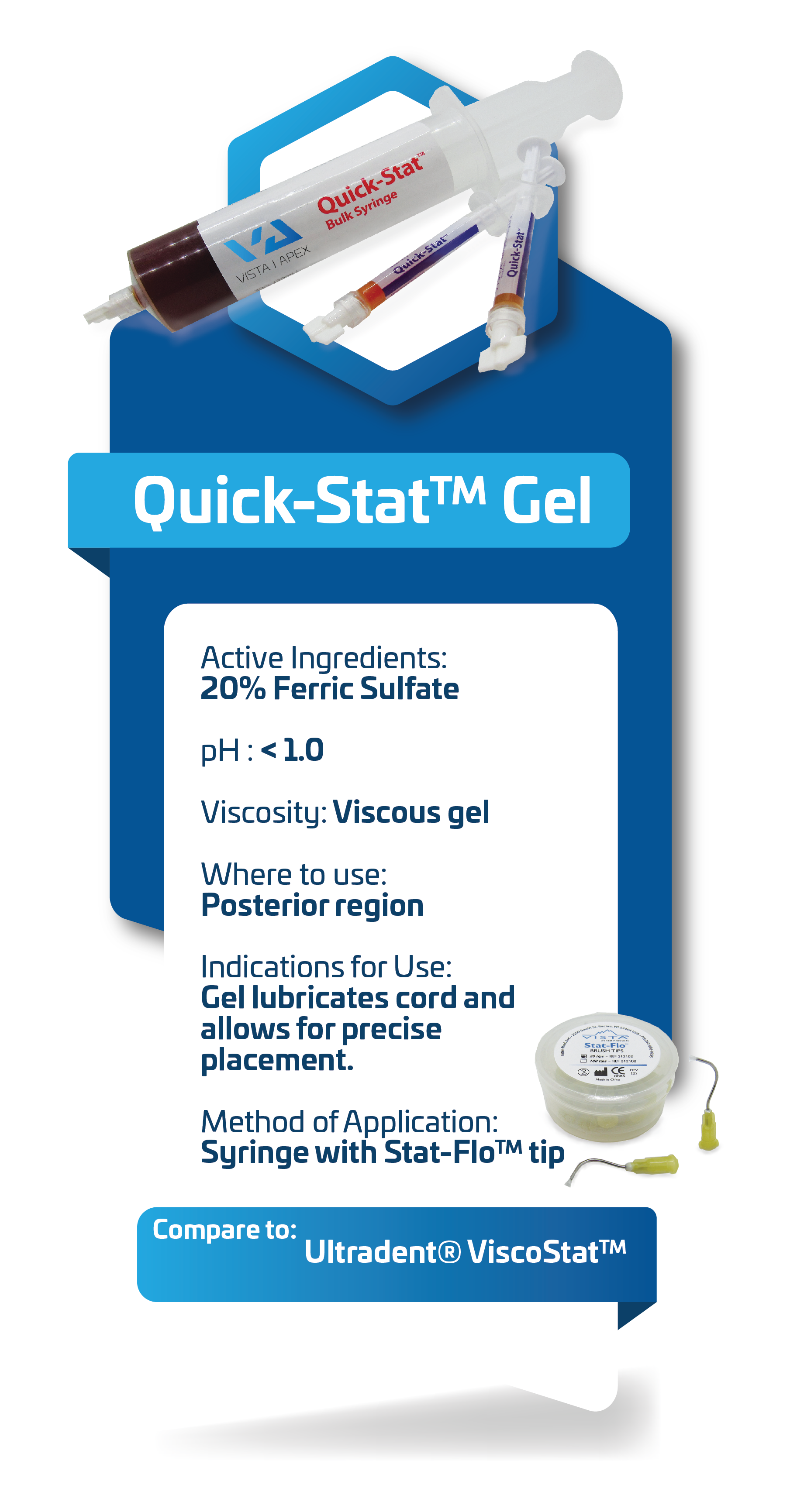
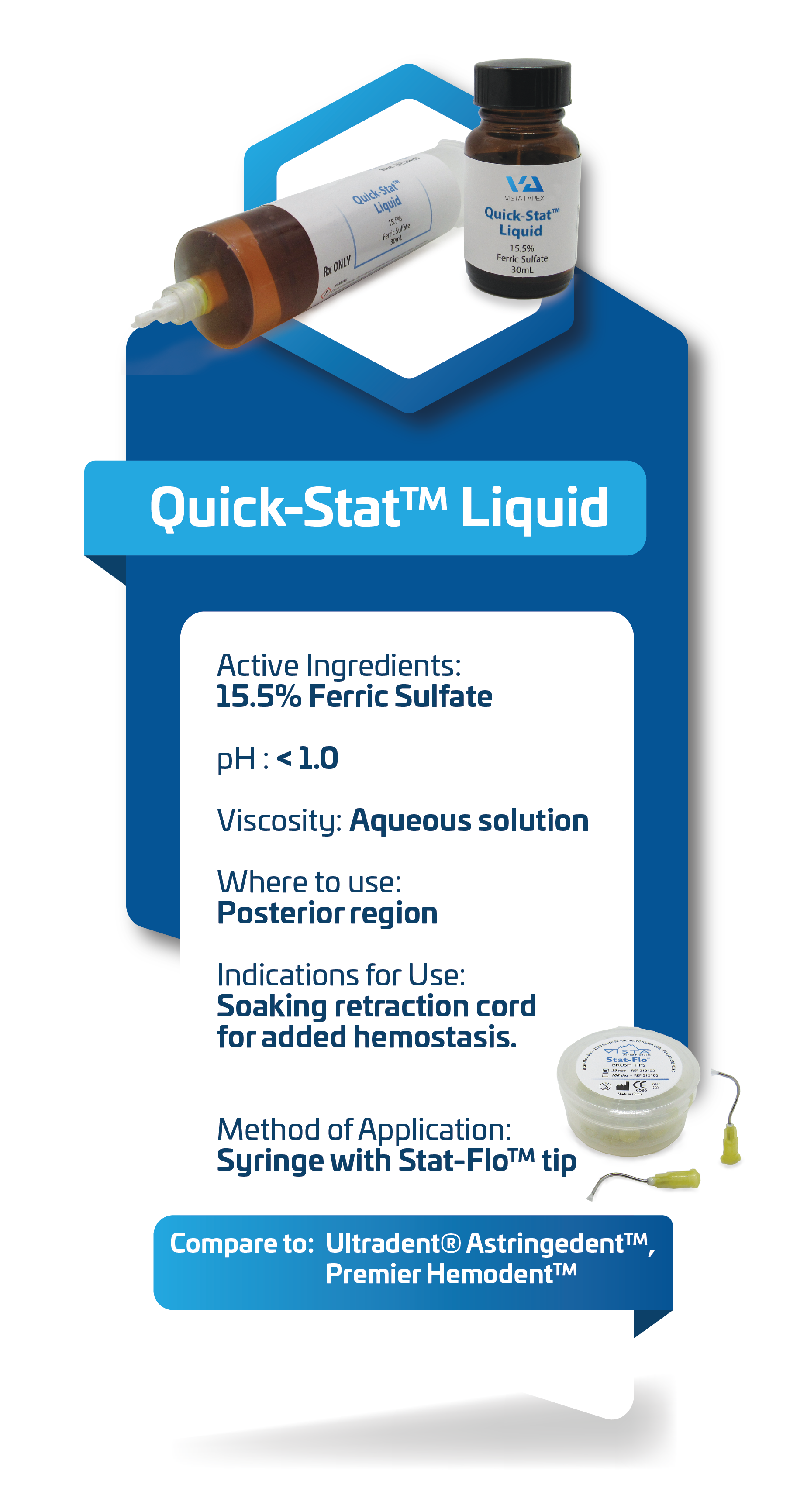
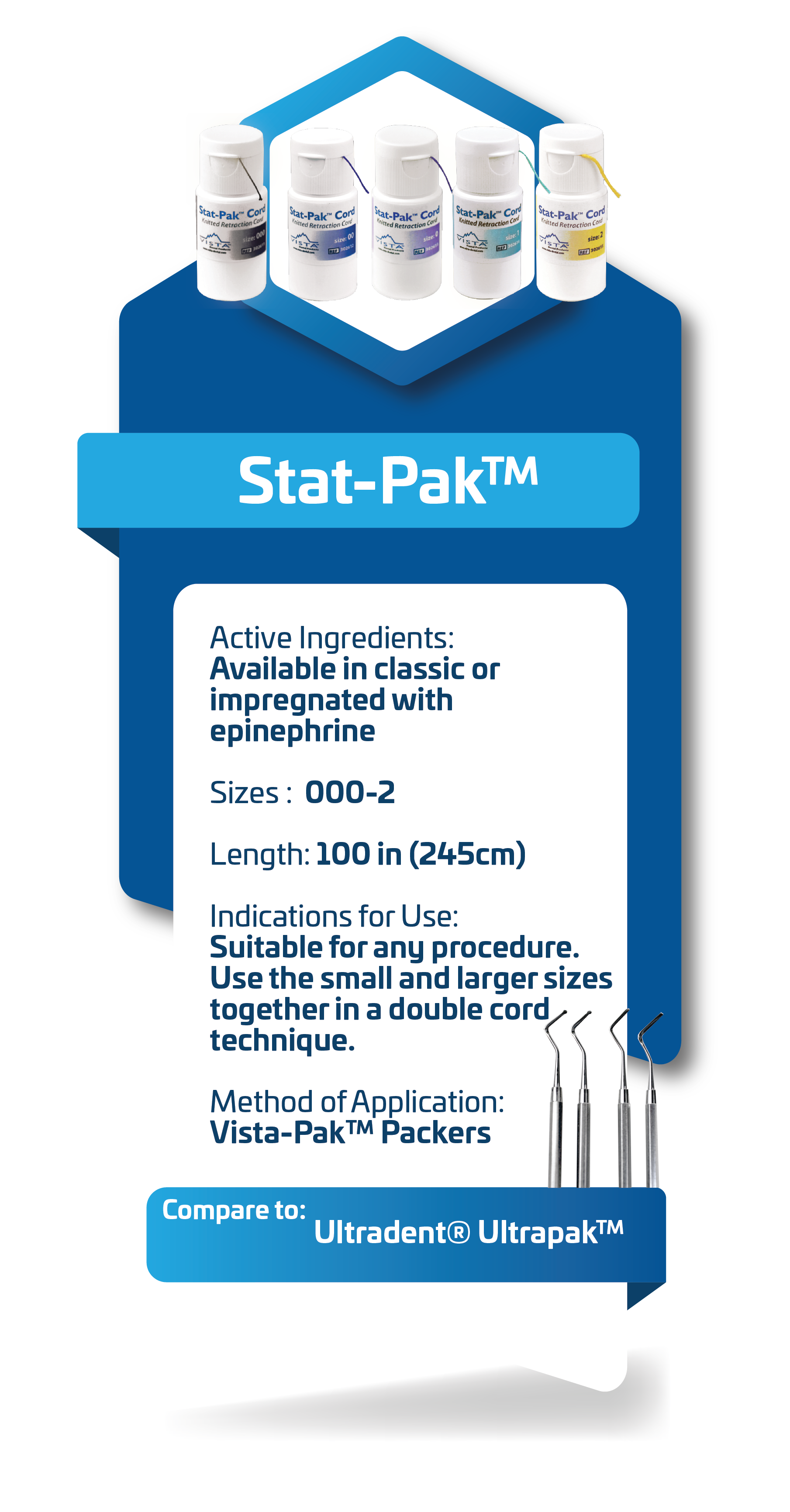
Technique
Step 1:
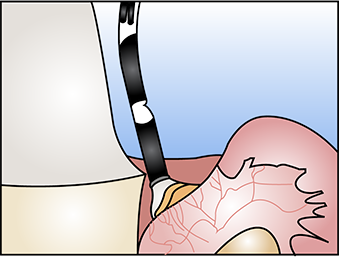
Scrub the hemostatic agent firmly against the sulcus until bleeding is controlled.
Step 2:
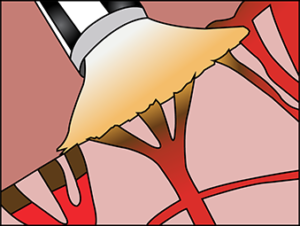
A tip with a padded end allows for gentle pressure to be applied, allowing hemostatic agent to penetrate cut capillaries.
Step 3:
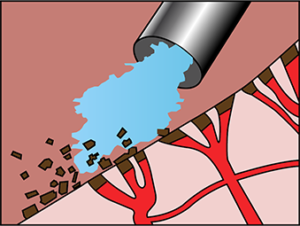
Use air/water to remove coagulum. If bleeding persists, repeat application.
Step 4:
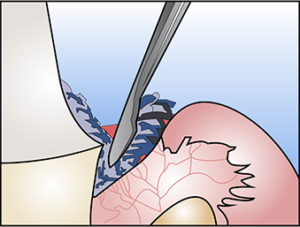
Once complete hemostasis
has been achieved, use
Stat-Pak™ retraction cord for
tissue displacement.
Frequently Asked Questions
When new coagulum ceases to form, hemostasis has been achieved. After Stat-Flo™ tip has effectively scrubbed the hemostatic agent into the cut capillaries, bleeding will stop. Test the preparation with air/water, if bleeding persists apply additional hemostatic agent and test the preparation again. If no bleeding occurs after testing with air/water, hemostasis has been achieved.


